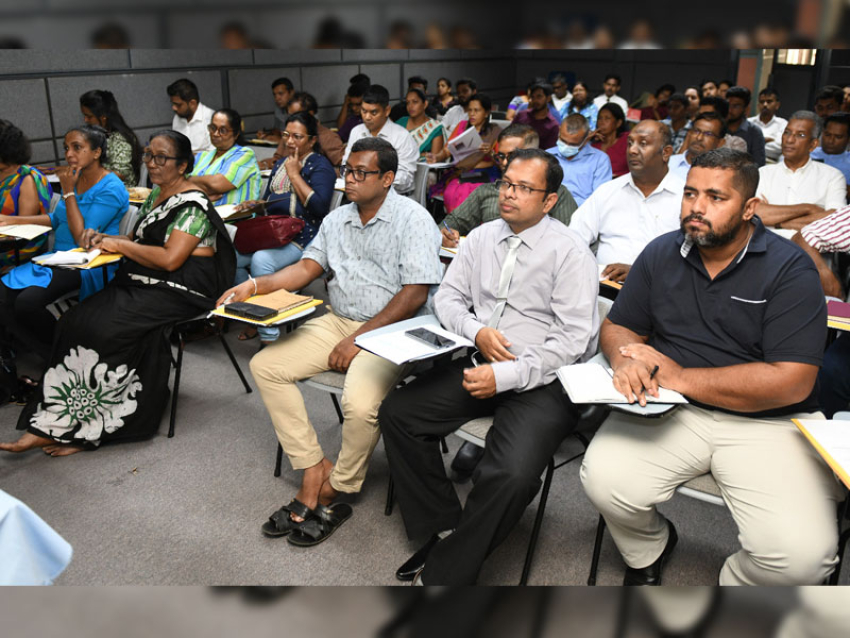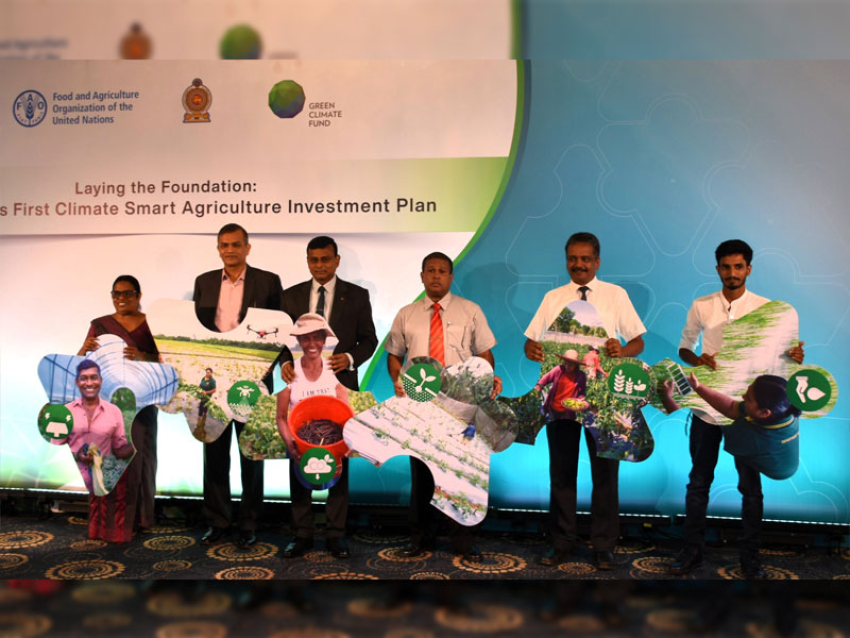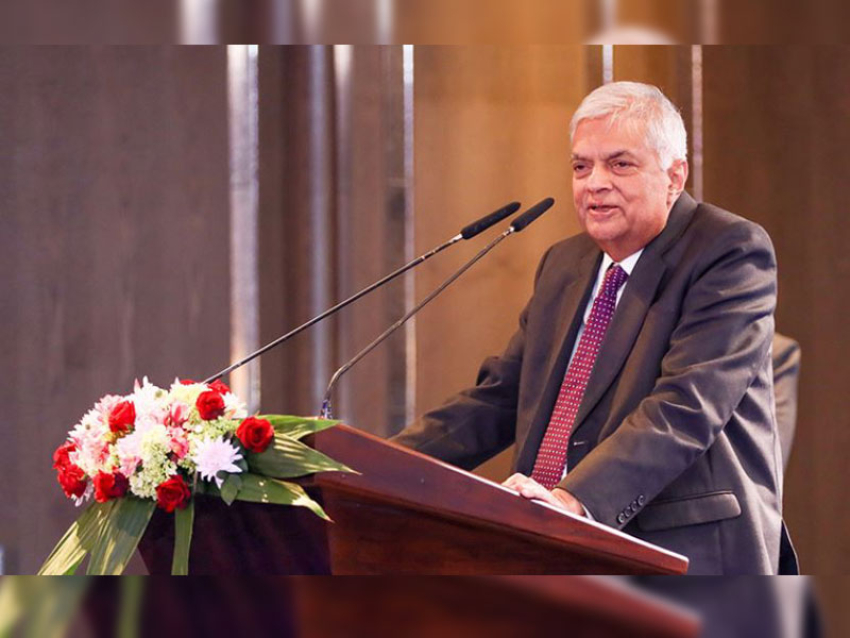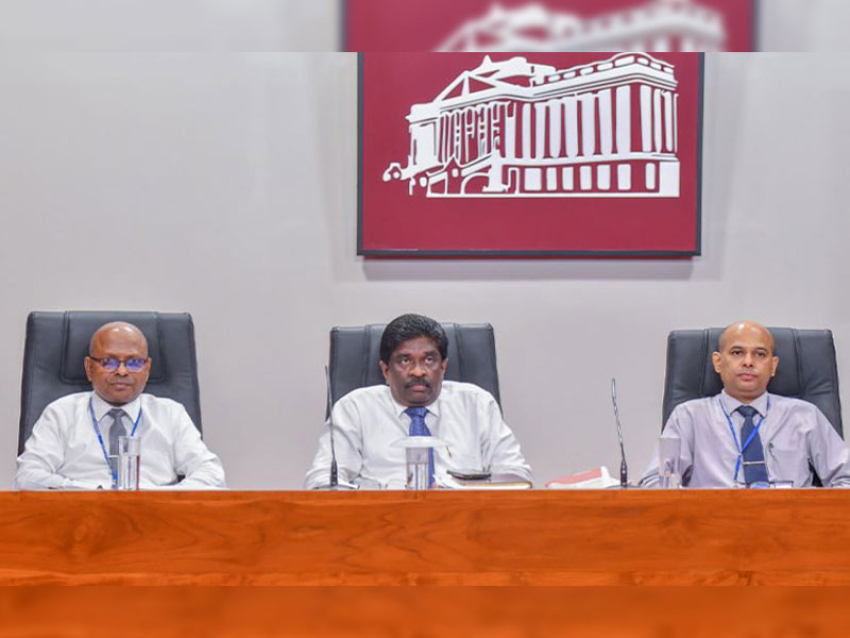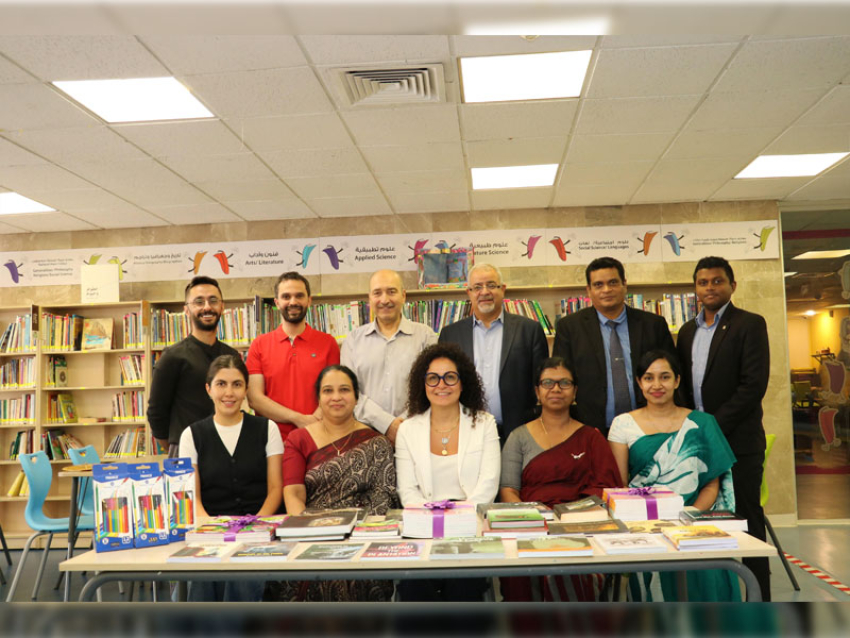Cognitive biases that ensured our initial survival now make it difficult to address long-term challenges that threaten our existence, like climate change. But they can help us too.We know that climate change is happening. We also know that it’s the result of increased carbon emissions from human activities like land degradation and the burning of fossil fuels. And we know that it’s urgent.
A recent report from international climate experts tells us that we are likely to reach 1.5C of average global warming in as little as 11 years. At that point we can expect “increased risks to health, livelihoods, food security, water supply, human security and economic growth”. These experts also found that temperature rise has already altered human and natural systems in profound ways, resulting in more extreme weather, the melting polar ice caps, sea level rise, droughts, floods and biodiversity loss.
But that information hasn’t been enough to change our behaviours on a scale great enough to stop climate change. And a big part of the reason is our own evolution. The same behaviours that once helped us survive are, today, working against us.It’s important to remember one thing, however. It’s true that no other species has evolved to create such a large-scale problem – but no other species has evolved with such an extraordinary capacity to solve it, either.
Brain biases
We lack the collective will to address climate change because of the way our brains have evolved over the last two million years.“Humans are very bad at understanding statistical trends and long-term changes,” says political psychologist Conor Seyle, director of research at One Earth Future Foundation, a programme incubator that focuses on fostering peace long-term.“We have evolved to pay attention to immediate threats. We overestimate threats that are less likely but easier to remember, like terrorism, and underestimate more complex threats, like climate change.”In early phases of human existence we faced an onslaught of daily challenges to our survival and ability to reproduce – from predators to natural disasters. Too much information can confuse our brains, leading us to inaction or poor choices that can place us in harm’s way.As a result, our brains evolved to filter information rapidly and focus on what is most immediately essential to our survival and reproduction. We also evolved to remember both threats, so that they could be avoided in the future, and opportunities, so we could easily recall where to find sources of food and shelter. These biological evolutions ensured our capacity to reproduce and survive by saving our brains time and energy when dealing with vast amounts of information. However, these same functions are less useful in our modern reality and cause errors in rational decision-making, known as cognitive biases. “Cognitive biases that ensured our initial survival make it difficult to address complex, long-term challenges that now threaten our existence, like climate change,” says Seyle.
Psychologists have identified more than 150 cognitive biases we all share. Of these, a few are particularly important in explaining why we lack the will to act on climate change.Hyperbolic discounting. This is our perception that the present is more important than the future. Throughout most of our evolution it was more advantageous to focus on what might kill us or eat us now, not later. This bias now impedes our ability to take action to address more distant-feeling, slower and complex challenges.Our lack of concern for future generations. Evolutionary theory suggests that we care most about just a few generations of family members: our great-grandparents to great-grandchildren. While we may understand what needs to be done to address climate change, it’s hard for us to see how the sacrifices required for generations existing beyond this short time span are worth it.
The bystander effect. We tend to believe that someone else will deal with a crisis. This developed for good reason: if a threatening wild animal is lurking at the edge of our hunter-gatherer group, it’s a waste of effort for every single member to spring into action — not to mention could needlessly put more people into danger. In smaller groups, it was usually pretty clearly delineated who would step up for which threats, so this worked. Today, however, this leads us to assume (often wrongly) that our leaders must be doing something about the crisis of climate change. And the larger the group, the stronger this bias becomes.
The sunk-cost fallacy. We are biased towards staying the course even in the face of negative outcomes. The more we've invested time, energy or resources into that course, the more likely we are to stick with it – even if it no longer seems optimal. This helps explain, for example, our continued reliance on fossil fuels as a primary source of energy in the face of decades of evidence that we both can and should transition to clean energy and a carbon neutral future.
These cognitive biases evolved for good reason. But they’re now hamstringing our ability to respond to what could be the largest crisis humanity has ever created or had to face.
Evolutionary upside
The good news is that our biological evolution hasn’t just hindered us from addressing the challenge of climate change. It’s also equipped us with capacities to overcome them.
Take our capacity for mental “time travel”. Compared to other animals, we are arguably unique in the degree to which we can recall past events and anticipate future scenarios.
UK students went on strike in February 2019 in protest of climate change inaction
UK students went on strike in February 2019 in protest of climate change inaction. Our ability to anticipate future scenarios is a capacity that sets humans apart (Credit: Getty)
We can imagine and predict multiple, complex outcomes and identify actions needed in the present to achieve desired outcomes in the future. And individually we often prove able to act on these plans. We invest in retirement accounts and buy insurance, for example, as ways to counter our short-term interests over the long-term.
Unfortunately, this capacity to plan to ensure a future outcome breaks down when large-scale collective action is needed – as is the case with climate change. As individuals, we know what we can do about climate change. But addressing the issue also requires collective action on a scale that exceeds our evolutionary capacities. The larger the group, the more challenging it gets. Remember the bystander effect?
But in small groups, it’s a different story.
As primates, we evolved to work cooperatively to defend territory and sustainably harvest food and resources for the group, all while ensuring enough genetic diversity to procreate. Anthropological experiments show us that, on average, any one individual can maintain stable relationships with 150 other people – a phenomenon known as “Dunbar’s number”. Beyond that social relationships begin to break down, undermining an individual’s ability to trust and rely on the actions of others to achieve collective long-term goals.
Recognising the power of small groups, Exposure Labs, the film company behind Chasing Ice and Chasing Coral, is using its films to mobilise communities to take local action on climate change. For example, in South Carolina, a US state rife with leaders who deny climate change, Exposure Labs shows a film to get a conversation started, inviting people from various interest groups – like the agricultural, fisheries, and tourism industries – to talk about how climate change affects them personally. They then work these small groups to identify practical actions that can be taken immediately at the local level to make an impact – something that helps generate the political pressure necessary to compel lawmakers to pass relevant local or state-wide legislation. When local communities shape the narrative around individual interests, people are less likely to succumb to the bystander effect and more likely to engage.
These approaches use a couple of other psychological strategies, too. First, when small groups are involved in coming up with solutions themselves, they experience the endowment effect: when we own something (even an idea), we tend to value it more. Second, social comparison: we tend to evaluate ourselves by looking at others. If we’re surrounded by other people in a group who are taking action on climate change, we’re more likely to do the same. This is also the impetus behind programmes like comparing energy consumption from household to household in a community. Research shows that when people compare their energy use with their neighbours’ via statements on their energy bills they are more likely to reduce energy consumption.
Of all our cognitive biases, however, the framing effect is one of the strongest affecting our decision-making processes. Humans are more likely to change behaviour when challenges are framed positively, instead of negatively. In other words, how we communicate about climate change influences how we respond. People are more likely to act in relation to a positive frame (“a clean energy future will save X number of lives”) versus a negative statement (“we’re going to go extinct due to climate change”).
In the Seychelles, schools offer clubs which teach children about the environment
Seychelles schools offer clubs which teach children about sustainability. We're more likely to take climate action if we’re around other people who are (Credit: Creative Commons)
“Most people believe that climate change is real, but feel powerless to do something about it in the face of consequences that feel far away from home,” says Exposure Labs managing director Samantha Wright. “So to get people to act, we need to make the issue feel direct and personal by focusing the issue locally, pointing both to local impacts and local solutions: like moving one's city to 100% renewable energy.”
Similarly, behaviour change must be incentivised at the local level. One nation leading the way has been Costa Rica, which put in place an innovative carbon tax on fuel back in 1997. To emphasise the connection for taxpayers between fuel use and benefits to their own communities, part of the revenue goes to pay farmers and indigenous communities to protect and regrow Costa Rica’s tropical forests. Costa Rica’s system “now generates $33 million annually for these groups and has helped the country reverse their forest loss while growing and transforming their economy,” says Carlos Manuel Rodriguez, Costa Rica’s Minister of Environment and Energy. In 2018, 98% of electricity used in the country came from renewable energy sources.
A worker cleans solar panels in Costa Rica in 2015
A worker cleans solar panels in Costa Rica in 2015; last year, 98% of the country’s electricity came from renewable energy sources (Credit: Getty)
Rodriguez says the country is going even further; they’ve announced a goal to be carbon neutral by 2050, an effort which will include a bus fleet that is 70% electric by 2035 and cutting the number of cars used in cities in half by 2040. The key has been having a large-scale, organised effort – but one supported and understood by hundreds of smaller groups and communities.
At a larger scale, the Paris Agreement and the EU’s 2050 carbon neutrality plan play a similar role, creating a common climate change action framework for countries, cities, towns and the private sector. “The EU’s 2050 carbon neutral plan is what’s needed at the global level to generate enough momentum, awareness and action, more importantly, it sets an example that can be matched and replicated by others,” says Patricia Zurita, CEO of BirdLife International, a global partnership of bird conservation organisations.Above all, the most helpful trait we’ve evolved to have is our ability to innovate. In the past, we used this skill to discover fire, invent the wheel or plant the first fields. Today, it may look more like solar panels, wind farms, electric vehicles and carbon pricing. Along with innovation, we’ve evolved to have the communication and technology to pass these innovations on, allowing a single idea or invention to spread far beyond our own family or town.From mental time travel to cooperative social behavior to our abilities to innovate, teach and learn, all of these evolutionary consequences always have helped us secure our own survival, and they will continue to do so – albeit in the face of a very different threat than we had in our hunter-gatherer days.We have evolved to be able to stop human-induced climate change. Now we must act
Ten simple ways to act on climate change
We know that climate change is happening – but there are plenty of things individuals can do to help mitigate it. Here’s your handy guide to the most effective strategies.
By Diego Arguedas Ortiz
In a new report published in September 2018, the world’s leading climate scientists made their starkest warning so far: our current actions are not enough for us to meet our target of 1.5C of warming. We need to do more.It’s settled science that climate change is real, and we’re starting to see some of the ways that it affects us. It increases the likelihood of flooding in Miami and elsewhere, threatens the millions of people living along the Brahmaputra River in north-eastern India and disrupts the sex life of plants and animals.So we don’t need to ask whether climate change is happening – or whether humans are causing it. Instead, we need to ask: “what can we do?”
What can you do that will have the biggest impact? Here’s our guide.
1. What is the single most important thing humanity has to do in the coming years – and what does that mean for me?
The number one goal? Limiting the use of fossil fuels such as oil, carbon and natural gas and replacing them with renewable and cleaner sources of energy, all while increasing energy efficiency. “We need to cut CO2 emissions almost in half (45%) by the end of the next decade,” says Kimberly Nicholas, associate professor of sustainability science at the Lund University Centre for Sustainability Studies (LUCSUS), in Sweden.
The number one goal is to replace fossil fuels with renewable energy sources
To mitigate climate change, the number one goal is to replace fossil fuels with renewable energy sources (Credit: Getty)
The road towards that transition includes daily decisions within your reach – like driving and flying less, switching to a ‘green’ energy provider and changing what you eat and buy.
Of course, it’s true that climate change won’t be solved by your buying or driving habits alone – although many experts agree these are important, and can influence others to make changes too (more on that later). Other changes are needed that can only be made on a bigger, system-wide basis – like revamping our subsidy system for the energy and food industries, which continue to reward fossil fuels, or setting new rules and incentives for sectors like farming, deforestation and waste management.
One good example of the importance of this regards refrigerants. An advocacy group of researchers, business-people and NGOs called Drawdown found that getting rid of HFCs (chemicals used in fridges and air conditioning) was the number-one most effective policy to reduce emissions. That’s because they are up to 9,000 more warming for the atmosphere than CO2. The good news is that we have made global progress on this, and two years ago 170 countries agreed to start phasing out HFCs in 2019.
This is important because we need “unprecedented changes in all aspects of society to deal with climate change, says the IPCC report. “Everyone is going to have to be involved," says Debra Robert, co-chair of the Intergovernmental Panel on Climate Change (IPCC), the group tasked with the report.
2. Changing how industries are run or subsidised doesn’t sound like anything I can influence... can I?
viduals need to exercise their rights both as citizens and as consumers, Robert and other experts say, putting pressure on their governments and on companies to make the system-wide changes that are needed.
ountrywide level, is to ‘divest’ funds out of polluting activities – such as avoiding stocks in fossil fuels, or banks that invest in high-emission industries. By getting rid of financial instruments related to the fossil fuel industry, organisations can both take climate action and reap economic benefits.
3. Other than that, what’s the best daily action I can take?
One 2017 study co-authored by Lund University’s Nicholas ranked 148 individual actions on climate change according to their impact. Going car-free was the number-one most effective action an individual could take (except not having kids – but more on that on that later). Cars are more polluting compared to other means of transportation like walking, biking or using public transport.
One ranking found that going car-free is the most effective action one person can take
One ranking found that going car-free is the most effective action one person can take (Credit: Getty)
In industrialised countries such as European nations, getting rid of your car can reduce 2.5 tonnes of CO2 – about one-fourth of the average yearly emissions (9.2 tonnes) contributed by each person in developed countries of the Organisation for Economic Co-operation and Development (OECD).
“We should choose more efficient vehicles and, whenever possible, switch directly to electric vehicles,” says Maria Virginia Vilarino, co-author of the mitigation chapter in the IPCC’s latest report.
4. But isn’t renewable energy extremely expensive?
Actually, renewables like wind and solar are becoming increasingly cheap across the world (although final costs are subject to local circumstances). The latest report from the International Renewable Energy Agency (Irena) found that several of the most commonly used renewables, like solar, geothermal, bioenergy, hydropower and onshore wind, will be on par with or cheaper than fossil fuels by 2020. Some are already more cost-effective.
Solar energy is now the cheapest source of electricity for many households
Solar energy is now the cheapest source of electricity for many households in Latin America, Asia and Africa (Credit: Getty)
The cost of utility-scale solar panels has fallen 73% since 2010, for example, making solar energy the cheapest source of electricity for many households in Latin America, Asia and Africa. In the UK, onshore wind and solar are competitive with gas and by 2025 will be the cheapest source of electricity generation.
Some critics argue that these prices disregard the price of integrating renewables on the electricity system – but recent evidence suggests these costs are ‘modest’ and manageable for the grid.
5. Could I make a difference by changing my diet?
That’s a big one, too. In fact, after fossil fuels, the food industry – and in particular the meat and dairy sector – is one of the most important contributors to climate change. If cattle were their own nation, they would be the world’s third largest emitter of greenhouse gases, after China and the US.
If cattle were their own nation, they’d be the third largest emitter of greenhouse gases
If cattle were their own nation, they’d be the world’s third largest emitter of greenhouse gases (Credit: Getty)
The meat industry contributes to global warming in three major ways. Firstly, cows’ burping from processing food releases lots of methane, a greenhouse gas. Secondly, we feed them with other potential sources of food, like maize and soy, which makes for a very inefficient process. And finally, they also require lots of water, fertilisers that can release greenhouse gases, and plenty of land – some of which come from cleared forests, another source of carbon emissions.
By reducing your consumption of animal protein by half, you can cut your diet's carbon footprint by more than 40%
You don’t have to go vegetarian or vegan to make a difference: cut down gradually and become a ‘flexitarian’. By reducing your consumption of animal protein by half, you can cut your diet's carbon footprint by more than 40%. A larger-scale approach could be something like banning meat across an organisation, as office-sharing company WeWork did in 2018.
This explainer of sustainable diets by the World Resources Institute (WIR) and its longer associated report provides more answers to questions about food and carbon emissions.
6. How harmful are my flying habits?
Planes run on fossil fuels, and we haven’t figured out a scaleable alternative. Although some early efforts to use solar panels to fly around the world have had success, we are still decades away from commercial flights running on solar energy.
A normal transatlantic round-trip flight can release around 1.6 tonnes of CO2 – almost as much as the average yearly emissions of one person in India.
A normal transatlantic round-trip flight can release around 1.6 tonnes of CO2, according to Nicholas’s study – almost as much as the average yearly emissions of one person in India. This also highlights the inequality of climate change: while everyone will be affected, only a minority of humans fly and even fewer people take planes often.
There are groups of scientists and members of the public who have decided to give up flying or who fly less. Virtual meetings, holidaying in local destinations or using trains instead of planes all are ways to cut down.
Wondering how much your travel contributes to climate change? Measure your carbon emissions in this calculator by researchers at the University of California, Berkeley.
7. Should I be shopping differently?
Most likely. That’s because everything we buy has a carbon footprint, either in the way it is produced or in how it is transported.
For instance, the clothing sector represents around 3% of the world’s global production emissions of CO2, mostly because of the use of energy to produce attire. The hectic pace of fast fashion contributes to this figure as clothes are discarded or fall apart after short periods.
The clothing sector makes up about 3% of the world’s CO2 emissions
The clothing sector makes up about 3% of the world’s CO2 emissions (Credit: Getty)
International transport, including maritime and air shipping, also has an impact. Groceries shipped from Chile and Australia to Europe, or the other way around, have more ‘food miles’ and usually a higher footprint than local produce. But this is not always the case, as some countries grow out-of-season crops in energy-intensive greenhouses – so the best approach is to eat food that is both locally grown and seasonal. Even so, eating vegetarian still beats only purchasing local.
8. Should I think about how many children I have (or don’t have)?
Nicholas’s study concluded that having fewer children is the best way to reduce your contribution to climate change, with almost 60 tonnes of CO2 avoided per year. But this result has been contentious – and it leads to other questions.
One is whether you are responsible for children’s climate emissions, and the other is where are these babies born.
If you are responsible for your kids’ emissions, are your parents responsible for yours? And if you are not, how should we consider the fact that more people will likely have more carbon emissions? We also could ask whether having offspring is a human right beyond questioning. And we could ask if having children is necessarily a bad thing for solving climate change: our challenges may mean we will need more problem-solvers in future generations, not fewer.
Those are hard, philosophical questions – and we’re not going to try to answer them here.
Children lead to more CO2 emissions – but they may also be future problem-solvers
Children lead to more CO2 emissions – but they may also be future environmentally-minded problem-solvers (Credit: Getty)
What we do know is that no two people have the same emissions. Although the average human releases around 5 tonnes of CO2 per year, each country has very different circumstances: developed nations like the US and South Korea have higher national averages (16.5 tonnes and 11.5 tonnes per person, respectively) than developing countries like Pakistan and Philippines (around 1 tonne each). Even within national borders, richer people have higher emissions than people with less access to goods and services. So if you choose to take this question into account, you have to remember that it’s not just about how many children you have – it’s where (and who) you are.
9. But if I eat less meat or take fewer flights, that’s just me – how much of a difference can that really make?
Actually, it’s not just you. Social scientists have found that when one person makes a sustainability-oriented decision, other people do too.
Here are four examples:
Patrons at a US cafe who were told that 30% of Americans had started eating less meat were twice as likely to order a meatless lunch.
An online survey showed that of the respondents who know someone who had given up flying because of climate change, half of them said they flew less as a result.
In California, households were more likely to install solar panels in neighbourhoods that already have them.
Community organisers trying to get people to install solar panels were 62% more successful in their efforts if they had panels in their house too.
Social scientists believe this occurs because we constantly evaluate what our peers are doing and we adjust our beliefs and actions accordingly. When people see their neighbours taking environmental action, like conserving energy, they infer that people like them also value sustainability and feel more compelled to act.
10. What if I just can’t avoid that flight, or cut down on driving?
If you simply can’t make every change that’s needed, consider offsetting your emissions with a trusted green project – not a ‘get out of jail free card’, but another resource in your toolbox to compensate that unavoidable flight or car trip. The UN Climate Convention keeps a portfolio of dozens of projects around the world you can contribute to. To find out how many emissions you need to ‘buy’ back, you can use its handy carbon footprint calculator.Whether you are a coffee farmer in Colombia or a homeowner in California, climate change will have an impact on your life. But the opposite is also true: your actions will influence the planet for the coming decades – for better or for worse.
The perils of short-termism: Civilisation’s greatest threat
Our inability to look beyond the latest news cycle could be one of the most dangerous traits of our generation, says Richard Fisher.Not long after my daughter was born in early 2013, I had a sobering thought about the life that lay ahead for her. With health and luck, she will live long enough to see the dawn of the 22nd Century. She may be frail or tired. But as the fireworks go off, she'll hopefully be contemplating what comes next. By then medicine may have extended the average lifespan, and at 86, perhaps she’ll only be on the cusp of retirement.
DEEP CIVILISATION
This article is the first in a new BBC Future series about the long view of humanity, which aims to stand back from the daily news cycle and widen the lens of our current place in time. Over the coming months, we will explore multi-generational thinking in all its forms, and hear from writers, researchers and artists who are looking beyond the short-term horizon.Our goal is to explore what really matters in the broader arc of human history and what it means for our descendants, as well as revealing the hidden patterns shaping our societies in the long term.
As a journalist, I often encounter and deploy the date 2100. It’s a milestone year frequently cited in climate change news reports, stories about future technologies and science fiction. But it’s so far ahead, clouded with so many possibilities, that the route we will take to get there is difficult to see. I rarely consider that, like my daughter, millions of people alive today will be there as 2100 arrives, inheriting the century my generation will leave behind. All the decisions we make, for better and worse, will be theirs to live with. And these descendants will have their own families: hundreds of millions of people not yet born, most of whom you or I will never meet.
For many of us currently in adulthood, how often can we truly say we are thinking about the well-being of these future generations? How often do we contemplate the impact of our decisions as they ripple into the decades and centuries ahead?Part of the problem is that the ‘now’ commands so much more attention. We are saturated with knowledge and standards of living have mostly never been higher – but today it is difficult to look beyond the next news cycle. If time can be sliced, it is only getting finer, with ever-shorter periods now shaping our world. To paraphrase the investor Esther Dyson: in politics the dominant time frame is a term of office, in fashion and culture it’s a season, for corporations it's a quarter, on the internet it's minutes, and on the financial markets mere milliseconds.
The 'temporal exhaustion' of society is leading to a disregard for future generations (Credit: Getty Images)
Modern society is suffering from “temporal exhaustion”, the sociologist Elise Boulding once said. “If one is mentally out of breath all the time from dealing with the present, there is no energy left for imagining the future,” she wrote in 1978. We can only guess her reaction to the relentless, Twitter-fuelled politics of 2019. No wonder wicked problems like climate change or inequality feel so hard to tackle right now.
That's why researchers, artists, technologists and philosophers are converging on the idea that short-termism may be the greatest threat our species is facing this century. They include philosophers arguing the moral case for prioritising our distant descendants; researchers mapping out the long-term path of Homo sapiens; artists creating cultural works that wrestle with time, legacy and the sublime; and Silicon Valley engineers building a giant clock that will tick for 10,000 years.
What these thinkers from myriad fields share is a simple idea: that the longevity of civilisation depends on us extending our frame of reference in time – considering the world and our descendants through a much longer lens. What if we could be altruistic enough to care about people we might never live to see? And if so, what will it take to break out of our short-termist ways?
You might also like:
Human beings haven’t always had the ability to think in an abstract way about long-term time. Today, we can live totally in the moment – absorbed by music, for instance – or we can mentally time-travel to imagine scenarios in the past or future. As you read this page, you can zoom back in your imagination to picture the first acts of our ancestors, and moments later spin the dial to billions of years hence as the Sun engulfs the Earth.
In fact, some researchers argue that this mental time-travel is a vital adaptation that led to our species’ success. According to Thomas Suddendorf of the University of Queensland, humans may be the only animals with this ability: we can create a complex "theatre stage" in our minds with the equivalent of a set, playwright, director and actors, and subsequently describe these imaginary scenes to other people.
people peering over theatre set design
Our ability to create a 'stage' for scenes in our minds allows for mental time-travel, a tremendously powerful skill (Credit: Getty Images)
“It is a tremendously powerful skill,” Suddendorf told BBC Future’s Claudia Hammond in 2016. “We can imagine situations like what we’re going to do tomorrow, next week, where we’re going to have a holiday, what career path to pursue, and we can imagine alternative versions of those. And we can evaluate each of them in terms of their likelihood and desirability.”
We have the innate ability, then, to imagine the consequences of our actions in deeper time, but sadly not always the will or the motivation to escape the salience of the present.
Despite our mental faculty to look and plan ahead, we have a weakness in our thinking called "present bias", which favours short-term payoffs over long-term rewards. For example, people are more likely to accept an offer of £10 today, rather than a guarantee of £12 in a week; to smoke cigarettes despite a shortened life; to spend on pleasures, not save for rainy days.
Some psychologists have used the metaphor of a “horse and rider” to describe this tension between our rationality and urges: the rider knows it’s smart to think longer-term, but the horse has its own ideas.
And if we are prone to neglecting the wellbeing of our own future selves, it’s even harder to muster empathy for our descendants.
There is nowhere this is more apparent than in the world of politics and economics.
Dancer on stage (Credit: Getty Images)
If we are prone to neglecting the well-being of our future selves, how do we muster empathy for others? (Credit: Getty Images)
To better understand why short-termism has such a hold on our society and how it is governed, imagine a newly-elected politician – let’s call her Clarissa – who has a dilemma. She is weighing up whether to spend a few billion dollars on climate change mitigation, pandemic preparation and reducing nuclear waste.
All will be of immense value to Clarissa’s great-grandchildren, saving lives and trillions of dollars down the track. But the immediate benefits will be invisible and the cost painful. She is conflicted: her constituents in the fossil fuel industry also need jobs, the military want funding for national security, and she was elected by promising tax cuts.
One of Clarissa’s economists has an answer: pointing out that something called a ‘discount rate’ can be applied to these far future benefits. It’s standard practice; countries all over the world use it.
A social discount rate is a technique that policy-makers use in their cost-benefit analyses to gauge whether to make investments with a long-term impact. It weighs the upsides for future people against costs borne in the present-day, and proposes that the calculated value of benefits to future economies and people should steadily decline over time. For example, if you’re weighing up whether to build an expensive sea-bridge to foster trade, it’ll tell you that a 5% boost in economic growth in 12 months is better than a 5% boost in 12 years.
Big Ben (Credit: Getty Images)
Politicians must take decisions that affect the long-term, but a looming election can often be a deterrent to acting with foresight (Credit: Getty Images)
There are a number of reasons discount rates exist. One is the assumption that economic growth over time will mean future generations will be richer and therefore better able to bear costs; another is to capture, in economic terms, people’s preference to prefer income today rather than tomorrow. Like the "present bias" experienced by individuals, many politicians – and the societies they govern – have a limit to how much cost they are collectively willing to bear for the benefit of people who don’t yet exist.
So, to return to Clarissa, she and her economist whip out their metaphorical calculator and crunch the numbers using a standard discount rate. Heading off these problems, they realise, might not show enough payback for decades or possibly even centuries – so the investments fail their cost-benefit analysis. Clarissa will leave it to her successor to decide.
Many citizens would accept that there’s a need to bear some costs to avoid future climate catastrophe – but how much?
Discount rates have been at the root of vigorous debates about climate change – and how urgently to make investments in mitigation as the effects rapidly worsen. Many citizens would accept that there’s a need to bear some costs to avoid future climate catastrophe. But how much cost is acceptable, and how quickly? What portion of your own income today would you be willing to give up for the benefit of future generations? When economists and politicians are debating this question, they are essentially arguing over how big a discount rate to apply.
Tell a philosopher about this rationale, meanwhile, and you’ll hear an ethical argument that dismantles the economic reasoning. It may work over the time scale of years, but a discount rate becomes problematic if you extend many decades or centuries hence. It means that the importance of the benefits felt by future human beings in these calculations eventually dwindles to nothing.
Girl surrounded by rushing people (Credit: Getty Images)
Our children and their own offspring will inherit the consequences of decisions we make today (Credit: Getty Images)
Some philosophers have reasoned that discounting the needs of our descendants is akin to burying a shard of broken glass in a forest. If a child steps on the glass and cuts themselves today or tomorrow, then a discount rate suggests this injury is much worse than a child hurting themselves on the glass a century from now. But ethically, there is no difference between the two.
The philosophical argument for investing in measures to protect the wellbeing of future generations can also be framed, simplistically, by imagining a set of scales, with everybody alive today on one side, and every unborn person on the other. Today’s population of 7.7 billion is a lot – but it is small when you weigh it against everybody on Earth who will ever call themselves human, along with all their achievements. If Homo sapiens (or the species we evolve into) endures for tens or hundreds of thousands of years, that becomes a humongous number of lives to consider. Trillions of families, relationships, births; countless moments of potential joy, love, friendship and tenderness.
By some estimates, around 100 billion people have lived and died on Earth in the last 50,000 years. But if the average annual birth numbers projected for the 21st Century were to hold steady for the next 50,000 years (unlikely, but let’s assume they do for illustration), then the number of people still to be born during this period looks like this:
Graphic (Credit: Nigel Hawtin)
Click/pinch to enlarge (Credit: Nigel Hawtin)
According to the social philosopher Roman Krznaric, failing to value the lives of all these descendants is akin to ‘colonising’ the future – essentially deciding that future generations have no ownership rights there, or any say over how it evolves. “We treat the future as a distant colonial outpost where we dump ecological degradation, nuclear waste, public debt and technological risk,” he told attendees at a recent event in London organised by The Long Time Inquiry, an initiative to encourage long-term thinking in the cultural sector.
Failing to value the lives of our descendants is akin to ‘colonising’ the future
Krznaric calls this attitude ‘tempus nullius’, drawing a parallel with an idea used to justify acts like the British settlement of Australia in the 1700-1800s. According to the legal notion of ‘terra nullius’ – nobody’s land – any ownership rights of indigenous Aborigines were ignored. Similarly, “we treat the future as ‘empty time’, where there are no generations”, he says.
A few governments are, reassuringly, trying to change their ways. For example, Finland and Sweden have parliamentary advisory groups to foster longer-term planning, and Hungary has an ombudsman for future generations. There are also various organisations now lobbying politicians to consider future generations from a human rights perspective, particularly in relation to climate change.
Old map of Australia (Credit: Getty Images)
Australia was deemed 'nobody's land' by European settlers - are we making a similar colonial claim on ownership of the future too? (Credit: Getty Images)
Meanwhile, Wales appointed Sophie Howe in 2016 – a former senior leader in the police – to be a “future generations commissioner”, charged with ensuring Welsh public bodies think about the long-term in their decisions. “This isn’t just through some aspirational policy document, it’s actually written into law through the Wellbeing of Future Generations Act,” Howe explained recently on BBC Radio 4. “All decisions taken by the public sector in Wales, including our government, must demonstrate how they are meeting today’s needs without compromising the ability of future generations to meet their own.”
It’s early days though, and while these examples are encouraging, they are also isolated. Unless we get better at ditching our short-termist ways on a global scale, the decisions we make in the early 21st Century could shape the future of our species in far more profound – and chilling – ways than we might realise.
And as one group of researchers warned recently, acts of neglect or stupidity in the present day could possibly even threaten civilisation itself.
--
In early September 2017, the world’s attention was focused on various pieces of salient news: Hurricane Irma was brewing in the Caribbean, Donald Trump’s administration had announced plans to dismantle an Obama-era immigration policy, and photographers captured Prince George’s first day at school.
Around the same time, a small, little-known group of researchers were meeting at a workshop in Gothenburg, Sweden with a goal to look much, much further ahead – far beyond this latest news cycle. Motivated by a moral concern for our descendants, their goal was to discuss the existential risks facing humanity.
The meeting would lead to an intriguing and readable co-authored paper called Long-term Trajectories of Human Civilisation, which attempts to “formalise a scientific and ethical field of study” for thousands of years hence. As they write: “To restrict attention to near-term decades may be akin to the drunk searching for his keys under the streetlight: it may be where empirical study is more robust, but the important part lies elsewhere.”
Street lights (Credit: Getty Images)
Focusing only on the near-term future may be 'like the drunk searching for his keys under the streetlight' (Credit: Getty Images)
The Trajectories group began with the assumption that, while the future is uncertain, it is not unknown. We can predict many things with reasonable confidence, via observed patterns, repeating events, and established behaviours throughout human history. For example: biology suggests that each mammalian species exists, on average, for roughly 1 million years before it becomes extinct; history shows that humanity has continually colonised new lands and strived to transform our abilities with technology; and the fossil record demonstrates that global extinction events can and do happen.
Extrapolating these patterns and behaviours into the future allowed them to map out four possible long-term trajectories for our species:
Status quo trajectories, in which human civilisation persists in a broadly similar state into the distant future.
Catastrophe trajectories, in which one or more events cause significant harm to human civilisation.
Technological transformation trajectories, in which radical technological breakthroughs put human civilisation on a fundamentally different course.
Astronomical trajectories, in which human civilisation expands beyond its home planet and into the accessible portions of the cosmos.
Graphic (Credit: Nigel Hawtin)
Click/pinch to enlarge (Credit: Nigel Hawtin)
Following their discussions in Sweden and afterwards, the Trajectories group concluded that the ‘status quo’ path would be a pretty unlikely scenario once you get to longer-term timescales. “Instead, civilisation is likely to either end catastrophically or expand dramatically,” they write.
So on the optimistic path, merging with some as-yet-unimagined technology or colonising the stars are two scenarios that are entirely possible with the passage of enough time, they suggest. Both paths could lead to our descendants thriving for millions if not billions of years, spreading out into the Universe or evolving into a more advanced species.
But we also are almost certain to face serious existential risks along the way. Natural disasters have pruned life on Earth continually – this much we know. What worries the Trajectories researchers more is that in the 20th and early 21st Century we've added a whole host of additional human-made risks into the mix too – from nuclear armageddon to AI apocalypse to anthropogenic climate change.
In their paper, they lay out a variety of chilling scenarios where civilisation is rewound back to pre-industrial times, or wiped out altogether. As you can see below, there are myriad paths we could potentially take:
Graphic (Credit: Nigel Hawtin)
Click/pinch to enlarge (Credit: Nigel Hawtin)
The researchers can't predict which order any of this will play out. They can predict, though, that it’s our trajectory to shape – for better or worse, the decisions we make this century could shape the next one and far beyond. “The stakes are extremely large, and there may be a lot that people today can do to have a positive impact,” they write.
The question is: will we?
--
I’m troubled by all this. It’s possible that we are at one of the most precarious points of human history. Yet I worry that our power to destroy ourselves is radically outstripping our wisdom and foresight.
How do we avoid sleepwalking into acts that harm future generations, or even worse, precipitating a catastrophe that could threaten our existence as a species? How are enough minds changed to prioritise a longer-term view when so many present-day pressures nudge us towards short-termism?
You can make philosophical and evidence-based arguments for protecting our species and future generations. But sadly, human beings are not rational. It’s not that easy.
To foster longer-term thinking that goes against our psychological base instincts, there need to be approaches and arguments that inspire and engage the non-rational part of our brain too.
Big library (Credit: Getty Images)
If culture forms the 'operating system for our society', should it feature more in discussions of the long-term future? (Credit: Getty Images)
That’s the thinking behind one new initiative called the Long Time Inquiry, recently established in the UK, to foster long-term thinking via artistic rather than empirical routes. The founders Ella Saltmarshe and Beatrice Pembroke argue that culture is often relegated in big strategic conversations about the future of humanity and the planet, and that needs to change.
“Culture forms the operating system for our society,” they write. “It’s foundational to the way science, politics, economics and technology develop. It shapes how we feel, how we empathise and how we connect with each other. It provides the reflective space to navigate complexity and uncertainty.”
Moreover, a piece of art – whether it is a painting or a play – has the potential to endure longer than a policy paper or political initiative. It is often tended, reproduced and preserved as the ages pass, making it one of most enduring legacies a human being can leave for the world.
It’s early days in their project, but Saltmarshe and Pembroke aim to foster and encourage new cultural works about the long-term as well as creating a network of like-minded artists, institutions and intellectuals.
The pair have been influenced by a principle called ‘Seventh Generation’ stewardship, defined by the leaders of the Native American Iroquois Confederacy many centuries ago. “Every decision they took had to keep in mind seven generations hence,” explains Saltmarshe. Similarly, they point to concepts such as Cathedral Thinking, which refers to the approach of building over multiple generations.
La Sagrada Familia (Credit: Getty Images)
Some cathedrals, such as Spain's La Sagrada Familia have taken more than a century to complete (Credit: Getty Images)
They also propose that the prevalence of short-termism is entwined with our attitude to death. “We’ve got a hunch that our inability to deal with the future of the world beyond our lifespan is wrapped up with our inability to deal with the fact that our lives will end,” they write. “Our denial of our own mortality prevents us from engaging with the long-term future.”
The Long Time Inquiry will build on the work of various individuals and groups who are using art and other symbolic means to provoke people to think longer-term.
Once a year, authors such as Margaret Atwood submit manuscripts to the Library that will not be read until the year 2114
For example, in 2014 the artist Katie Paterson began building The Future Library. Once a year, authors such as Margaret Atwood submit manuscripts to the Library that will not be read until the year 2114. Their books will be printed on paper made from 1,000 trees growing in a special forest called Nordmaka, near Oslo in Norway.
Or there's Longplayer, a musical score that will play for 1,000 years. It is an eerie, but calming, composition seemingly intended to evoke a feeling of religiosity in its listeners. The installation can be heard at a lighthouse in London where you’ll also find 234 Tibetan singing bowls used in live concerts to accompany the score. There are also listening posts across the world and an online stream.
But perhaps one of the most ambitious symbolic gestures that our generation will create is a special clock buried deep inside a mountain in Texas. It involves a group of Silicon Valley visionaries, a pioneering musician, and the world's richest person – and its story begins in a bad neighbourhood in the late 1970s.
--
The music producer Brian Eno was in a run-down corner of New York, on the way to a glamorous dinner party.
It was the winter of 1978, and Eno’s taxi was bumping over potholes, hurtling towards an address he didn’t recognise. As he drove south, the streets got darker and the sense of urban neglect grew, until finally he arrived at his destination. A man lay slumped in the doorway.
Puzzled, he double-checked the address on the invitation card. He had been invited to the home of a celebrity singer for dinner. Could this really be the right place?
Eno rang the bell and rode the elevator up to the apartment. Inside, to his surprise, was a glittering, glamorous loft probably worth $2-3m.
Curious, he asked the hostess during dinner if she liked living where she did. “Oh sure,” she replied, “this is the loveliest place I have ever lived.”
He realised that what she meant was ‘within these four walls’. The dilapidated neighbourhood outside didn’t exist for her.
New York 1970s (Credit: Getty Images)
In the New York of the 1970s, Brian Eno saw short-term thinking everywhere (Credit: Getty Images)
Afterwards, when he looked around at his contemporaries, Eno saw the singer’s narrow view everywhere. What’s more, this attitude to space also translated to the way this New York glitterati seemed to think about time – not much further than the following week. They were living in what Eno called a ‘small here’ and a ‘short now’. “Everything was exciting, fast, current, and temporary. Enormous buildings came and went, careers rose and crashed in weeks. You rarely got the feeling that anyone had the time to think two years ahead, let alone 10 or a hundred,” he later reflected.
“More and more,” he would write in his notebook, “I find I want to be living in a Big Here and a Long Now.”
Decades later, this experience inspired Eno to work with several other like-minded thinkers to establish the Long Now Foundation, which aims to “provide a counterpoint to today's accelerating culture and help make long-term thinking more common”. It runs regular speaker events in San Francisco, and has launched initiatives such as the Rosetta Project, a digital library of all human languages designed to last millennia, or a website called Long Bets, which asks people to stake money on their predictions for the long-term future. Their scope of view is 10,000 years hence, because it was around 10 millennia ago that agriculture became widespread and civilisations began. When talking about dates, they also add an extra 0 in order to capture the notion that our paltry years are dwarfed by a larger timeframe (Happy 02019!).
Of all their projects, however, the most ambitious attempt to break people out of short-term thinking is a symbolic installation – the 60m-tall (200ft) 10,000 Year Clock, currently being installed in the mountains of Western Texas on land owned by Amazon billionaire Jeff Bezos. The Clock is intended to be a monument that outlasts its creators, ticking for 10 millenia.
In 2018, the first parts of the clock’s mechanical architecture were placed inside the limestone cavern. Yet it has been almost two decades in the making. Engineering a mechanism that lasts 10,000 years has stretched designers to answer questions few have tackled before – everything from choosing which ball bearings will last longest (ceramic, not steel) to how to avoid the timing drifting as Earth's rotation slows and wobbles over millenia.
The entrance tunnel to the mountain (Credit: Long Now Foundation)
The entrance tunnel to the mountain that will house the 10,000 Year Clock (Credit: Long Now Foundation)
Inside the mountain, a 16-tonne diamond-chainsaw robot has carved a spiral rock staircase, which will snake around the metal cogs and gears of the clock in a central cavity hundreds of feet deep. Engineers recently installed a manual winding mechanism to power the bells and display dials – but the clock itself will be kept running by the temperature difference from day to night. Air within a tank and bellows at the cavern’s top will expand during the day, providing just enough energy to keep a pendulum ticking for centuries.
WATCH: Timelapse of the first steps of the 10,000 Year Clock's installation
As the centuries pass, a new, different sequence of bells will play every so often. You can get a sense of what future generations might hear on one of Eno’s albums, inspired by the clock. The first track features the sequence of bells that will play 5,000 years from the year he composed it – in the year 07003.
The clock is designed to provoke its visitors to reflect on their place in time. While rationally we can conceive of the deeper future and how our acts affect tomorrow, its creators believe that it will be a wholly different experience to stand inside an ancient cavern looking at a clock that will tick for hundreds of lifetimes.
It's not outlandish to believe that works of art or installations such as the clock can influence people’s views and actions in ways that rational, empirical arguments cannot. For example, BBC Future recently explored how the style of imagery deployed to depict climate change can influence the viewer’s sense of agency, empathy and willingness to change their behaviour. Similarly, researchers have found that people are more likely to alter their environmental habits if they are asked to engage with climate change through their personal values and experiences rather than hearing scientific arguments from experts.
“10,000
A small prototype version of the clock can be found at the Science Museum in London (Credit: Jeff Easter/Flickr/CC BY 2.0)
Myself, I have mixed feelings about the clock. I wonder what future generations will make it of it, looking back at the period and the place in which it was conceived. It will cost tens of millions of dollars and has developed amidst the dizzying growth of Silicon Valley – and the fortunes and controversies that followed.
The project may come to be associated with its main funder Bezos and his company Amazon, which has become notorious for pushing its workers to meet deliveries on ever-shorter timeframes. And a cynic might argue that the riches of a corporation notorious for paying low taxes might be better spent on long-term infrastructure, catastrophe prevention or social programmes that benefit future generations.
Still, I hope that the clock will be seen as its makers intended, a symbol that changes minds about short-term thinking rather than Silicon Valley largesse.
Over 10,000 years, perhaps all of these details will be forgotten anyway. Maybe the clock will mean something entirely different to our descendants, revealing a truth of our age that we can't yet imagine. Like time capsules, often when humanity erects monuments that reach for posterity, these symbols go on to say more about what we value and who we are today than we will ever know ourselves. If the 10,000 Year Clock does hold a hidden truth about us that only our descendants will see, I suppose it would be an appropriate legacy for the long-forgotten billionaire and foundation that placed it inside a mountain.
--
I understand the dangers of short-termism. I can both rationalise the argument, and feel the need to care more about future generations. But I confess I still struggle with how to translate that to action as an individual. Some days I wonder if I should be eating more ethically. The next I consider sacrificing a trip abroad to reduce my carbon emissions.
It is daunting to contemplate how we as individuals might act with kindness and foresight for unborn people. To realise that we are just one in a chain of generations, and accept that while we will one day be forgotten, we owe an ethical obligation to our descendants to leave a better world than the one we inherited ourselves. I find it is difficult enough extrapolating how my small acts as an individual might affect the wider world and its population today, let alone hundreds of years into the future.
I experienced a brief moment of clarity, though, when sitting with my daughter at breakfast recently. As five-year-olds do, she often asks questions. We got talking about what I had been writing.
“Do you know what the future is?” I asked.
She paused. “No, not really.”
“Well you know history, and the past? This is the opposite.”
She chewed her cereal.
“What’s the furthest in the future you can imagine?” I asked.
“Um... when I am 10.”
“Can you imagine further? Being a grown-up?”
“No. When I am 10.”
She picked up her bowl and wandered out to the kitchen.
And so, I thought, this is where I can start: as a parent. As my daughter grows up, what I am sure I can do is try my hardest to widen the horizons, empathy and potential of a little girl who can’t yet imagine a world beyond life as a 10-year-old. A girl who will become a teenager, an adult, a grandmother, my closest descendant in a chain of generations, who, just maybe, will live long enough to watch the start of the 22nd Century unfold.
-





